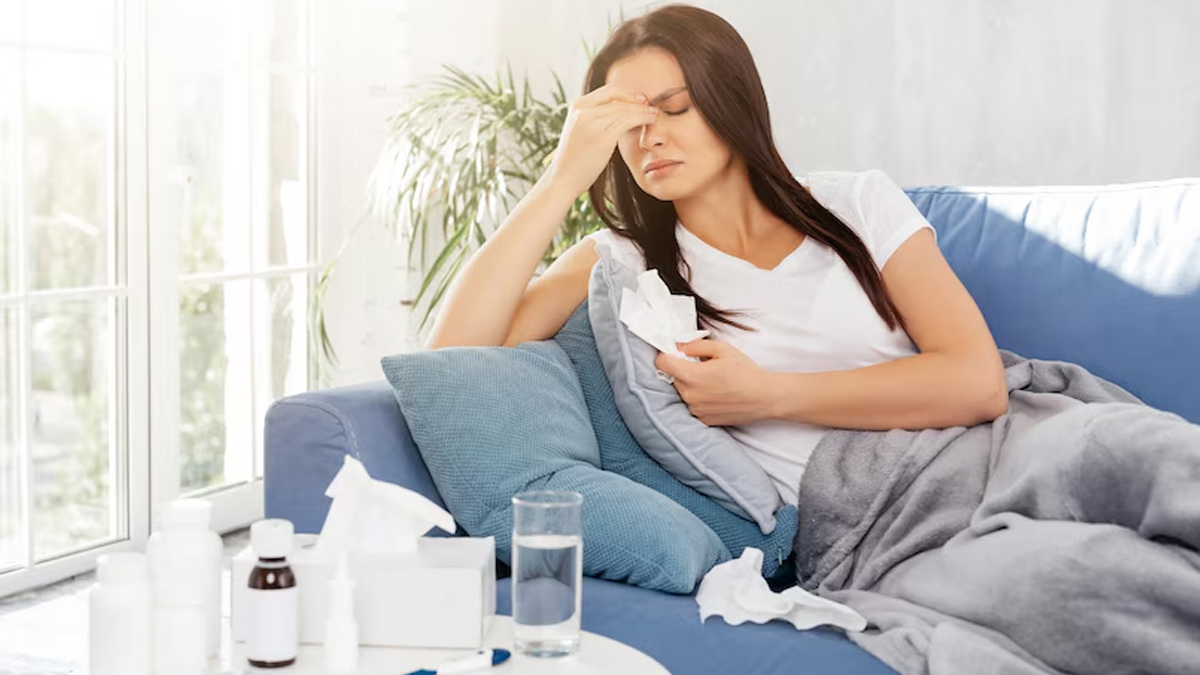
The pandemic that caused global devastation four years ago appears to be returning to haunt us once again. As the monsoon season progresses, Delhi is experiencing a wave of respiratory ailments, with many residents reporting symptoms such as stuffy noses, fever, and body aches. These symptoms, reminiscent of COVID-19, have sparked concerns about a potential resurgence of the virus in the capital. Health experts are urging vigilance and caution as they investigate the cause of these illnesses and work to ensure the safety and well-being of the population.
Table of Content:-
To know more about this and how to prevent COVID, OnlyMyHealth interacted with Dr Kiran Dhake, Corporate Wellness Physician, Mumbai. Dr Dhake said, “We’ve come a long way. From the early, terrifying days of a rapidly spreading, deadly COVID-19 infection to the current circumstances – pre-pandemic life.”
Talking about the rise in cases with COVID-like symptoms, Dr Dhake said, “As we have started living carefree lives after experiencing three restricted lockdowns and as we thought that COVID-19 was winding down, we are seeing a sharp rise in cases with symptoms such as fever, blocked nose, persistent dry cough, and weakness.”

Dr Dhake further said, “Though this abrupt rise is not causing much inconvenience for affected individuals, with relatively shorter isolation periods, it is undoubtedly instilling anxiety and dilemma, as these symptoms are observed intermittently, not constantly.” Is COVID-19 at it again? Are we once more facing the resurgence of COVID-19?
Is COVID Back?

The worrisome trend is that these symptoms could mimic multiple conditions – influenza, pollution-mediated allergic respiratory conditions, and SARS-COV2 infection. This trend is being witnessed in certain areas of the capital city, Delhi. In the last few months, Delhi has recorded fresh COVID-19 cases nearly reaching 500 – a remarkable escalation compared to the previous two fortnight periods. Other northern states such as Rajasthan, Uttar Pradesh, and Bihar are also experiencing a rise in similar cases.
According to studies, the resurgence is largely attributed to new variants, such as the FLiRT sub variants and LB.1, which are thought to be descendants of the Omicron variant. These new strains tend to undergo mutation, offering easy entry for the virus into the body system and evading immunity induced by past infections or vaccinations, leading to increased transmissibility.
However, research shows that there are sporadic cases of COVID-19, and the trend is more of a rise in influenza-like illnesses. Dr Dhake said, “The current variants are known to culminate into a mild variety of COVID-19 in the majority of individuals, with relatively lower chances of long-term complications. Exceptions are elderly individuals with co-existing illnesses and immuno-compromised individuals who are more prone to catching the infection faster and may have to be treated in the hospital.”
Precautionary Measures

To combat the unanticipated surge in COVID-19 cases and to arrest its transmission, Dr Dhake suggest the following measures:
1. Promptly approach healthcare professionals if symptoms are identified. Avoid self-medication at any cost. Self-administration of antibiotics should be avoided.
2. Conduct RAT tests at home or RT-PCR tests if available. If results are positive, isolate the affected individual immediately to prevent transmission to healthy individuals.
3. Stick to preventive behaviour protocols:
- Wearing masks during respiratory illness, in crowded places, or while travelling.
- Maintaining appropriate hand hygiene.
- Practising a nutritious dietary regime and regular physical activities.
- Enhancing indoor air quality with adequately ventilated rooms, workspaces, and the installation of HEPA filters.
4. Stay up to date with vaccinations and travel protocols.
Conclusion
It’s clear that for many, if not most, people, SARS-CoV-2 infection no longer carries the same risks of adverse outcomes as it did in the early months of the pandemic, and it’s time to let go of caution and resume pre-pandemic life. However, a sporadic but abrupt, steep rise in COVID-19 cases must prompt health surveillance systems to monitor the situation closely and craft policies and programs beyond politicisation and economic priorities.
Also watch this video
How we keep this article up to date:
We work with experts and keep a close eye on the latest in health and wellness. Whenever there is a new research or helpful information, we update our articles with accurate and useful advice.
Current Version